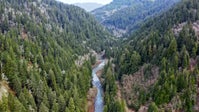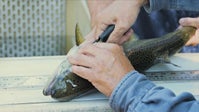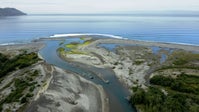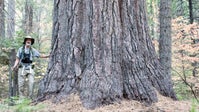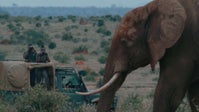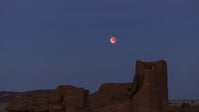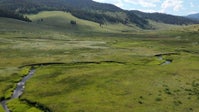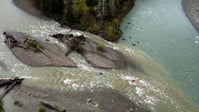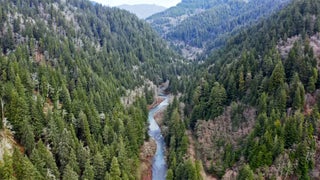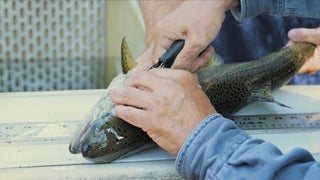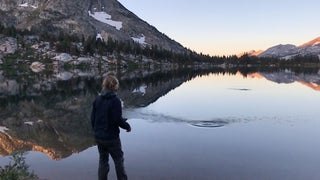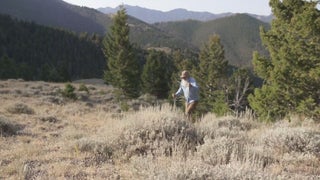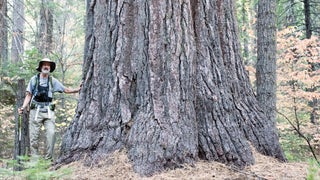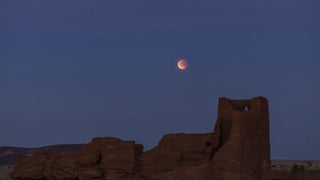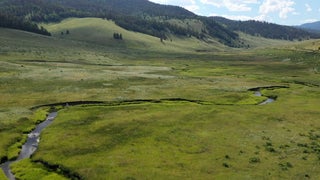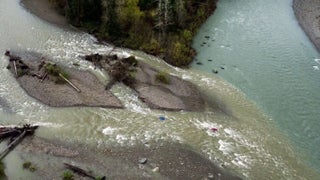BRAD EINSTEIN: The Redwood of the east. It's an honorific bestowed on a species of tree in the East Coast that somehow resemble the girth and grandeur of the coastal Redwoods of California. Getting called the Redwood of the east it's like watching a mysterious VHS or being a Kennedy. It's cursed, and you're doomed to die.
[MUSIC PLAYING]
This primeval wonderland is Cook Forest State Park in Northwestern Pennsylvania. It's home to some of the most significant stands of old growth forests left east of the Mississippi. And it's been home to many Redwoods of the east. This is the first Redwood of the east, the American chestnut-- more specifically, its corpse.
Before white men came with their steel axes, the American chestnut ruled over the east, with towering canopies and widths of up to 18 feet across. Now, to give you an idea, that's roughly the size of a gently used Hyundai Sonata with 22 highway MPG. I'm not selling one. It's just good to know.
Even during the height of the Industrial Revolution, chestnuts were a real life giving tree minus the martyrdom complex. They provided food, by which we're talking 20 million pounds a year of nutrient-rich nuts for people, for animals. It was a staple food in Appalachia. Proto--hipsters in Brooklyn would light off to Prospect Park to go a-nutting. They'd nut left. They'd nut right, kind of like people still do in public parks.
Also, lumber. Not only were chestnuts huge and grew hella fast, they also had incredibly rot resistant lumber, as evidenced by this 100-year-old standing corpse behind me. Much like that other giving tree we mentioned earlier, they also ended up as a [BLEEP] stump. In the early 20th century, the blight came.
The blight was a real punch to the chest and a kick in the nuts because in less than 50 years, every single one of these hogs was dead. Knock-knock. Who's there? It's the reaper. The way the blight killed chestnuts is the same way that many tree diseases kill their victims, a process called girdling, which is a fancy name for arboreal beheading, which is actually fancier than girdling. It's girdling. Let's just stick with girdling. Every time I whittle, I just use a knife to create a [BLEEP] knife. What is the point?
[MUSIC PLAYING]
But just because they're all dead doesn't mean they're all dead because the blight, much like K-pop, seems to target adolescence the hardest. So to this day, you will see chestnut saplings trying to grow from the stumps of trees that were cut down in the '40s. So this is the biggest and only chestnut I could find. And I am squatting. And so they'll grow for a few years before the blight plucks them at the prime of their lives, like they were in a texting while driving commercial.
(SINGING) Chestnuts roasting on an open fire cause the chestnut is in hell. It's trapped in a cycle of perpetual death. Merry Christmas to you.
This is the new Redwood of the east, the eastern hemlock. And Jesus, it's big. Woo! Hot dang. He is a girth daddy. Look at this massive, stately hog. Yeah, look at that. You know, I'm kind of like a size queen for trees.
So what's taking out these magnificent hogs? One answer, the hemlock woolly adelgid. These fuzzy [BLEEP] have been weaving their looms of destruction throughout eastern hemlock populations for decades. And boy howdy is it working.
Over the past few decades, the eastern hemlock has been disappearing faster than the middle class in a heartbreaking example of late stage sapitalism. If we lose the eastern hemlock like we lost the American chestnut, what becomes the new Redwood of the east? Unfortunately, there are a [BLEEP] ton of contenders.
[MUSIC PLAYING]
Yep. That pretty much covers every tree.
[MUSIC PLAYING]

